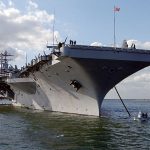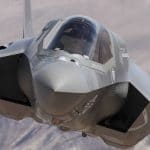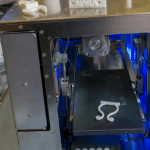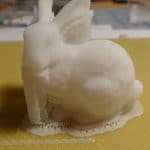BAE Systems expand 3D printing programme – for new stealth fighter?
BAE Systems, one of the world’s largest defence manufacturers, announced a deal with Renishaw last week that will see the company’s use of 3D printing expand massively. BAE have worked with Renishaw before and their factory at Samlesbury in Lincolnshire has several printers capable of producing high-grade aircraft parts. Now it seems BAE want to significantly grow their printing capability.
Recent BAE projects have included printing replacement parts for the Eurofighter Typhoon combat aircraft. The company plays a major part in maintaining the Typhoon fleet, and there are almost 600 of them spread across nine different countries. Being able to print parts more cheaply than making them through conventional machining could save both BAE and those nine air forces a lot of money. It’s also a great advert for the quality of parts that can now be printed. The Typhoon is a high-performance aircraft, and almost every part of it needs to be able to handle immense stress.
It’s likely that BAE have an even more exciting reason for scaling up their printing capabilities, though. The UK – and Europe in general – have been pretty much left out of what war nerds call “fifth generation” combat aircraft. This term means stealth planes like the F-22A, the controversial F-35 or China’s J-20. Most of them have been developed in the USA, with China and Russia trying out their own designs, but apart from BAE’s 10% share of the F-35 Europe hasn’t wanted to play the stealth game.
The Tempest
BAE Systems have some ambitious ideas, though. The company is planning to develop one of the first sixth-generation fighters, the Tempest. This is planned to enter service around 2035 and it’s probably going to be the most advanced plane in the world when it does. It’s also an ideal candidate for 3D printing.
According to BAE their main interest in additive manufacturing is that it can reduce the cost of producing parts. That’s certainly true over relatively low production runs, but there’s probably another reason too, even if BAE are understandably not so keen to talk about it.
One problem with current stealth aircraft is that, apart from the F-22A, they tend to be a bit of a dog when it comes to actually flying them. The F-35 is notoriously slower and less agile than the aircraft it’s replacing, and the main reason for that is its stealthy shape. Sixth-generation aircraft will still be stealthy, but aerodynamics are going to get a higher priority when their shapes are designed. That means the stealth has to come from attention to detail instead, and that’s where 3D printing could be vital.
Stealthy shapes
When you look at an aircraft and imagine radar beams reflecting from it, you probably visualise pulses of energy bouncing off wings and stuff. In fact most of the reflection is from joints in the aircraft’s structure. Unfortunately, a high performance aircraft needs to have a complex shape, and that means a complex structure with a lot of joints.
If you’ve messed around with a 3D printer much you’ll know that it can make shapes that are simply impossible to manufacture with traditional methods. It’s likely BAE Systems want to use that capability to make aircraft components that have the required complex shapes without all the joints that have infested previous designs. Imagine a wing structure printed as a dozen large parts, instead of assembled from thousands of smaller, simpler ones like they are now. That’s going to eliminate thousands of radar reflections and make the aircraft a lot harder to detect.
There’s a final reason BAE could be stepping up their use of printed parts. The Tempest project was first announced two years ago at the 2018 Farnborough air show. The government and RAF want to accelerate it, though, so it should be picking up pace a lot this year. If you want to be able to rapidly change a design, what’s the best way to manufacture the product? 3D printing, of course. Hopefully, with additive manufacturing to ease the way, the UK’s next combat plane will be delivered on time, within budget and extra stealthy.








Leave a comment
You must be logged in to post a comment.